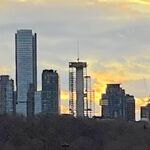steveintoronto
Superstar
A control system would certainly not be a "quick fix". It will take years to install, but I see no sign of the present capability of the extended green traffic light for streetcars at intersections being in operation in the meantime.They don't need to spend millions on an operations center for a quick fix. Just 6 people working diligently. Ideally with a smart city (lights, etc) eventually it becomes more high-tech but we need something now.
A slew of inspectors might help, but can't do anything like a CBTC and integrated vehicular traffic control system would. A sophisticated control system would buffer speed up or down to arrive at lights at a predetermined and optimal time. To do otherwise is to invite bunching, which is exactly what is happening now. Adding more streetcars actually promotes that unless that added capacity is flow controlled.
There is a marked lack of 'overseers' along the line, doubtless, and to blame the TTC alone is misplaced. City Transportation is as much or more to blame on this as the TTC. And the ones who really have to shoulder the blame sit in Council.
Toronto is at its level of incompetence in many ways. And the King Street Pilot is one of the most glaring examples. Right concept implemented by troglodytes. Just the budget alone is indicative of how out-to-lunch Council is. $1.5M.
Last edited:








